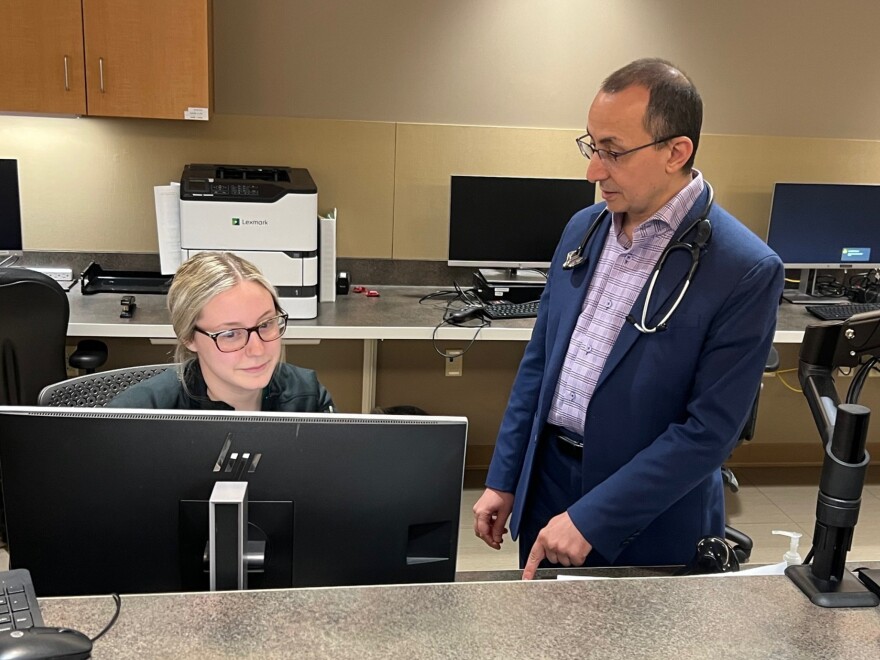Nicole Garrett woke up one morning last January with shortness of breath and was not feeling well. She says she fainted and explains what happened next:
"The next thing I knew, I woke up on the kitchen floor. I had passed our. I went to the ER. Through testing it was discovered I had pulmonary embolisms in both of my lungs. I was immediately transferred to Memorial Hospital in Carbondale.
Pulmonary embolisms are blood clots that usually form in the leg and travel to the lungs where they cause stress on the heart. Pulmonary embolisms affect around 900,000 people in the U.S. every year.
SIH Prairie Heart Institute Cardiologist Dr. Rizwan Kahn and his team took over when Nicole arrived at Memorial Hospital, "From the team in the ER to our whole cath lab team - everybody worked to get the patient here. She's here today because of that team work, even after the major event that she had."
Once in the Cath Lab, they inserted a catheter through Nicole’s leg to the clot in her lungs. They used drugs to dissolve the clot. After 3 days, Nicole was able to go home.
Cases like Nicole’s are why SIH launched their Pulmonary Embolism Response Team or PERT, this January.
The new team created an algorithm that helps identify, evaluate, and determine the right treatment for patients with pulmonary embolisms.
Brittany Kirk is an RN and coordinates the Stat Heart program at SIH in Carbondale. She says the PERT is allowing them to improve patient care and outcomes, "Early recognition and activating the team is decreasing the mortality and length of stay for people with pulmonary embolisms. That's what we want - better outcomes for our patients and that's why we developed this algorithm."
This new program was rolled out to 10 emergency rooms across southern Illinois that feed into Memorial Hospital in Carbondale. Doctors at these hospitals follow the new algorithm. After testing, they consult the PERT team to decide the patient’s level of treatment. If the pulmonary embolism is severe enough, Dr Raed Al-Dallo, SIH Prairie Heart Institute director of cardiovascular services says the goal is to get the patient the correct treatment as soon as possible, "Pulmonary embolisms, just like heart attacks, have the big one that no one want's to have. Then there's the medium one and the small one that you can survive. You cannot tell ahead of time which patient is going to get which one."
According to Dr. Al-Dallo, PERT provides an option that’s not available at smaller hospitals, "The program orfers patients the ability to come to the center where you can get the treatment in an expedited manner."
The staff at SIH hopes they see this program provide more patients in the southern Illinois community with outcomes like Nicole’s experience.
According to Nicole, she's well on her way to recovery a year later, "I've had a great year since this happened. After some recent tests, I've found out everything's going well. That gave me peace of mind."




